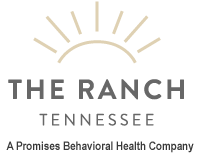Borderline personality disorder (BPD) is a complex mental health condition in which individuals struggle with intense, volatile and painful emotions, impulsive thoughts and behaviors and persistent feelings of emptiness and abandonment. BPD typically results in problems with self-image, impulses, emotional responses and conflicts with other people including loved ones. Intense, highly changeable episodes of anger, depression and anxiety may last anywhere from a few hours to days. It is common for individuals with BPD to have co-occurring depression, anxiety, post-traumatic stress, substance use disorder, and eating disorders. The Diagnostic and Statistical Manual of Mental Disorders, Fifth Edition, classifies BPD as a cluster B personality disorder and describes it as “a pervasive pattern of instability of interpersonal relationships, self-image, and affects, and marked impulsivity that begins by early adulthood and is present in a variety of contexts.” Recent research published in the Journal of Clinical Psychiatry indicated BPD may impact up to 5.9% of the general population, while more conservative estimates state a prevalence rate of 1.6%. Studies show an estimated 83% of individuals diagnosed with BPD have a history of major depressive disorder (MDD). As many as 80% of people with BPD attempt suicide at some point in their lives, with about 9% losing their lives to suicide. Affect plays an important role in both BPD and MDD, and negative affect has been implicated in a number of psychological disorders. Negative affect is characterized by calmness and serenity on the low end of the spectrum and hostility and nervousness on the high end. Depressive symptoms in BPD tend to be triggered by the individual’s negative perception of their life situation, whereas MDD has a more defined clinical basis.
Impulsivity and Risky Behaviors
In addition to suicidal tendencies, people with BPD often engage in impulsive, potentially dangerous behaviors such as self-harm (cutting or burning), excessive spending, unsafe sex, substance abuse or reckless driving. BPD is a common psychiatric condition encountered in hospital and psychiatric emergency settings. An estimated 9% to 27% of agitated individuals presenting at emergency rooms are diagnosed with BPD. These visits are associated with short-lived crises manifesting in impulsive episodes of self-harm, suicide attempts, aggressiveness, impulsivity, intense anxiety, short-term hallucinations and delusions.
BPD and Depression
Despite the frequent comorbidity of major depression and BPD, limited research has examined the impact of co-occurrence on the severity, course and presentation of depression. A study involving 60 individuals with major depressive disorder included 29 with co-occurring BPD. Results suggest that while depressed individuals with and without BPD may be objectively rated with similar levels of depression, those with comorbid BPD subjectively rate their depression as more intense or severe. BPD represents a major source of chronic “treatment-resistant” depression. John Gunderson, MD, a top BPD expert, explained this in the context of a 22-year-old client seeking his help. “Most people with BPD are depressed, but for them having rather miserable relationships and vocational histories contributes a lot to why they feel so bad. Undesirable living situations and/or failures to achieve what you expect of yourself exacerbate and prolong depression. These are reasons that medications usually won’t help much.” He believes psychosocial adaptations at the root of BPD cause depression, and moreover, eliminating negative triggers can help alleviate depression to the point that antidepressants are no longer needed. BPD is frequently misdiagnosed due to the high rate of co-occurring depression, bipolar disorder and other behavioral disorders. Furthermore, impulsivity traits and volatile mood swings mimic other disorders. A growing body of research indicates certain personality traits make people more vulnerable to either anaclitic (dependent) or introjective (self-critical) depression. Anaclitic depression is characterized by feelings of loneliness, weakness, helplessness, intense fear of being unloved, unwanted, uncared for and abandoned. Interestingly, these same symptoms manifest in individuals with BPD far more so than the symptoms of introjective depression.
Borderline Personality Disorder Treatment
Psychotherapy combined with pharmacotherapy is the standard treatment approach for BPD. Both cognitive behavioral therapy (CBT) and dialectical behavior therapy (DBT) have been extensively studied in individuals with BPD. In one study, CBT resulted in a decreased number of suicidal attempts, although measures of depression, anxiety, general psychopathology, social functioning, quality of life, dysfunctional attitudes, emergency visits, and mean length of hospitalization were comparable between the CBT and control group. In adolescents, a course of DBT for a period of 52 weeks resulted in a significant long-term decrease in self-harm and a fast recovery from suicidal ideation, depression and borderline symptoms. It’s crucial that clients with either depressive symptoms and/or co-occurring major depressive disorder or bipolar disorder receive accurate diagnoses so symptoms of both are properly treated.



